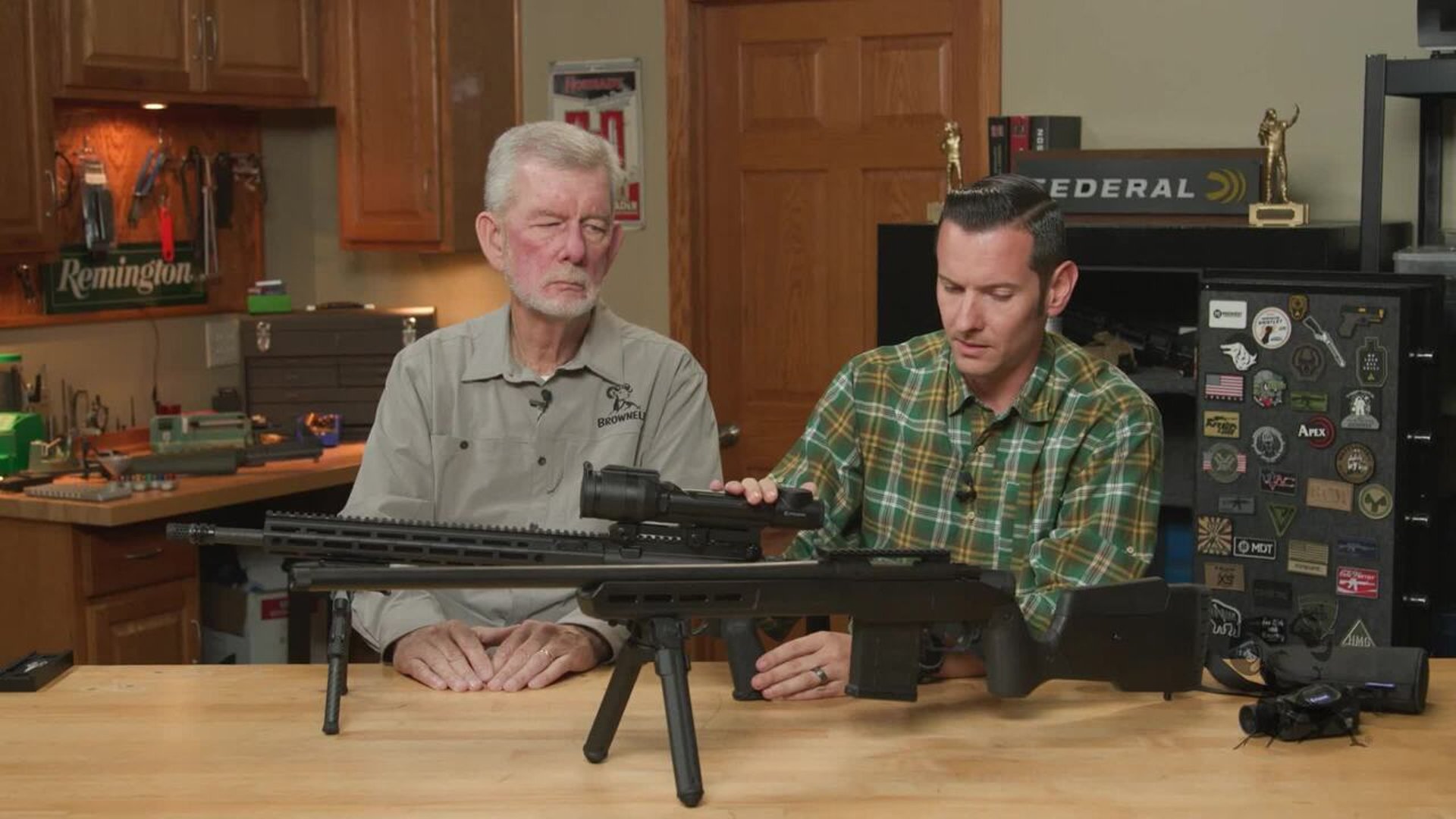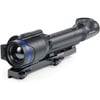Tech Tip: Thermal Optics and How to Mount Them
Intro To Thermal Optics
In this tech tip, Steve and Caleb from Brownells dive into the topic of thermal optics. As thermal technology becomes more affordable and accessible, more hunters and shooters are exploring its advantages. Thermals are especially effective for detecting heat signatures, making them a valuable tool for both daytime and nighttime use.
Why Thermals for Hunting
Thermal optics are increasingly popular for hog hunting, coyote hunting, and varmint control. These invasive species have become largely nocturnal, which makes traditional optics less effective. A thermal optic provides the ability to see heat signatures in complete darkness, through fog, and even through light brush. This gives hunters a significant advantage when tracking game at night.
Thermal vs Night Vision
While night vision amplifies ambient light to make targets more visible, thermal optics detect heat. This difference allows thermals to operate in conditions where night vision may struggle, such as foggy environments or areas with limited ambient light. Both tools have their advantages, but thermal scopes provide more versatility for hunting scenarios.
Complementing Thermals with Night Vision
For those who can afford both systems, combining thermal and night vision can be extremely effective. In military applications, head-mounted night vision is often paired with a rifle-mounted thermal optic, allowing the user to scan with night vision and confirm with thermal. The same principle applies to hunting, where a handheld thermal or night vision unit complements a rifle-mounted thermal scope.
Handheld Thermal Units for Spotting
Handheld thermal imagers are valuable for spotting targets without swinging a rifle around unnecessarily. These compact devices allow hunters to scan large areas quickly and safely. Handheld thermals are especially useful for teams, where one person spots while the other prepares to take the shot.
Mounting Considerations for Thermal Optics
Mounting a thermal optic requires a different approach compared to traditional rifle scopes. Because a thermal uses a screen instead of a glass optic, eye relief is less critical. The shooter needs to be closer to the optic, almost like looking at a small TV screen. Many thermals come with cantilever-style mounts to provide proper positioning on AR platforms or bolt-action rifles.
AR Rifle Mounting Setup
On an AR-style rifle, thermal optics mount well because the stock aligns with the top rail. This makes the extra height of thermal mounts ideal for proper sight alignment. The optic is positioned forward, and optional magnetic eye cups can be added for comfort, though many shooters prefer to remove them for more flexibility.
Mounting a Thermal on a Bolt-Action Rifle
Bolt-action rifles present different challenges. Because the stock is not naturally in line with the top rail, shooters often need an adjustable cheek piece to achieve proper alignment with a thermal optic. Caleb demonstrates how the optic must be mounted further back on a bolt gun and how a raised cheek rest helps achieve the correct sight picture.
Adjustable Cheek Piece for Proper Alignment
Using a stock such as the MDT adjustable stock allows shooters to raise the cheek piece to align with the higher mounting position of the thermal. This is essential for comfort and accuracy when shooting bolt-action rifles with electronic optics.
Pulsar Talion XQ35 Pro Features and Battery System
The thermal featured in this video is the Pulsar Talion XQ35 Pro. It mounts directly to any 1913 Picatinny rail and uses Pulsar’s quick-change battery system, which is one of the most user-friendly on the market. The battery locks in securely and can be swapped quickly, making it practical for long hunts.
Eye Relief and Recoil Considerations
Although eye relief is less critical with thermals, recoil must still be considered. Heavy recoiling rifles can drive the optic back into the shooter’s face if mounted too close. For rifles chambered in cartridges like 300 Winchester Magnum, shooters should mount the optic further back to avoid impact. On lighter recoiling rifles such as 6.5 Creedmoor or .243 Winchester, this is less of a concern.
Flat Screen Design and No Parallax Issues
Thermal optics do not suffer from parallax issues because users are viewing a flat screen rather than a magnified glass lens. This means that minor shifts in head position will not affect the point of impact, making thermals easier to use in dynamic shooting positions.
Related Content and Thermal Sighting Resources
Brownells offers additional resources on thermals, including guides on choosing the right thermal optic and sighting in thermal scopes. These videos provide deeper insights into specific models and step-by-step instructions for achieving accurate zero with thermal technology.
Final Thoughts and Hunting Applications
Thermal optics are a powerful tool for hunters looking to improve their effectiveness at night. Whether mounted on an AR or a bolt-action rifle, thermals like the Pulsar Talion XQ35 Pro provide unmatched performance for detecting and targeting game such as hogs and coyotes. As prices continue to become more accessible, thermal technology is becoming an essential addition to the serious hunter’s toolkit.
Shop All Pulsar Products Here: Pulsar








